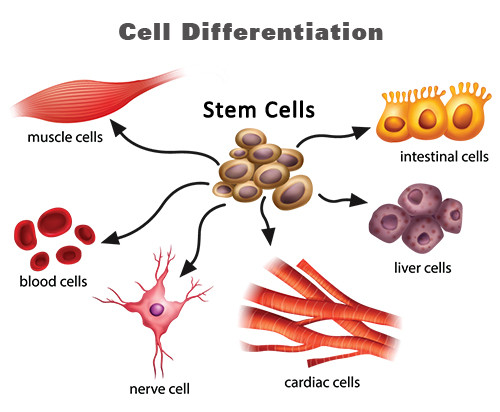The MESO-BRAIN consortium is a collaborative research effort, led by the UK’s Aston University and funded by FET and the European Commission, that’s focused on developing 3D human neural networks that can imitate brain-like activity—essentially emulating the human neural network. The ultimate goal of the project is to gain a better understanding of human disease progression and neural growth in order to determine how to treat a variety of debilitating conditions, such as Parkinson’s disease, dementia, and trauma, so it’s a pretty big thing to tackle. In order to emulate real brain activity, the consortium plans to use nanoscale 3D printing and 3D printed stem cells.
As Medline Plus explains it, stem cells are basically a repair system for our bodies, as they are unspecialized, which means they have no specific function within the body. Because these unique cells basically go wherever they’re most needed, they have the potential to actually develop into different types of cells, such as blood cells, brain cells, and muscle cells. Additionally, they can both renew and divide themselves over a long period of time, which makes them even more versatile.
 Image courtesy of BiologyWise.com
Image courtesy of BiologyWise.comThe MESO-BRAIN project is using human-induced pluripotent stem cells in order to fabricate complex shapes that will hopefully make it possible to have more precise interactions with neurons, in an effort to help with the treatment and understand of neural diseases. These cells will be placed onto 3D laser-printed structures to replicate the brain’s neural networks, which will make it easier to monitor the activity of elements using electrical stimulation…a challenge when growing artificial stem cells in a flat petri dish, as they can’t properly imitate in vivo 3D interactions or developmental cues in real living organisms.
“MESO-BRAIN aims at developing functional, three-dimensional human stem cell-derived neuronal networks of defined and reproducible architecture, based on a brain cortical module that displays in vivo connectivity and activity. Thus, the development of such a technological platform will be foundational for a new era of biological and medical research based on human neural networks,” the FETFX project page for MESO-BRAIN states.
Hopefully, the results of this project will allow for improved development of large-scale cell-based assays, which are analytic procedures for quantitatively measuring or qualitatively assessing the amount, presence, or functional activity of the target, whether it’s a biochemical substance, chemical element, drug, or cell in an organism or organic sample. With better testing, it will be easier for researchers to investigate the effects of various toxicological and pharmacological compounds on a person’s brain activity and determine the best course of treatment for the previously mentioned neural conditions, as well as gaining a better understanding of them. In addition, if the project researchers are successful, this could pave the way to creating more physiologically accurate models, thus improving the efficiency of drug screening and negating the need for animal testing.
 Image courtesy of FETFX Project
Image courtesy of FETFX Project(Source: Science Times)
Subscribe to Our Email Newsletter
Stay up-to-date on all the latest news from the 3D printing industry and receive information and offers from third party vendors.
You May Also Like
Profiling a Construction 3D Printing Pioneer: US Army Corps of Engineers’ Megan Kreiger
The world of construction 3D printing is still so new that the true experts can probably be counted on two hands. Among them is Megan Kreiger, Portfolio Manager of Additive...
US Army Corps of Engineers Taps Lincoln Electric & Eaton for Largest 3D Printed US Civil Works Part
The Soo Locks sit on the US-Canadian border, enabling maritime travel between Lake Superior and Lake Huron, from which ships can reach the rest of the Great Lakes. Crafts carrying...
Construction 3D Printing CEO Reflects on Being Female in Construction
Natalie Wadley, CEO of ChangeMaker3D, could hear the words of her daughter sitting next to her resounding in her head. “Mum, MUM, you’ve won!” Wadley had just won the prestigious...
1Print to Commercialize 3D Printed Coastal Resilience Solutions
1Print, a company that specializes in deploying additive construction (AC) for infrastructure projects, has entered an agreement with the University of Miami (UM) to accelerate commercialization of the SEAHIVE shoreline...





























